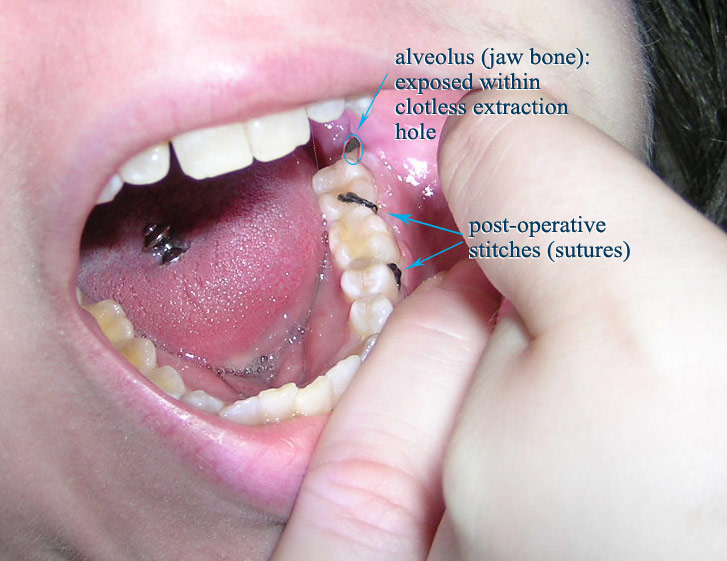A dry socket is a swelling of the bone, resulting from the recent extraction of loss of a tooth. Most commonly, dry socket occurs as a complication of wisdom tooth (third molar) removal, however it can also occur as a complication of routine tooth extraction as well
Dry socket is caused by the bodies’ inability to properly form a blood clot after removal of the tooth; in other words the process that the body uses to heal itself after removal of the tooth breaks down. The direct cause by which this happens is unknown, however a number of risk factors that can increase the likelihood of dry socket occur have been established.
The presence of a dry socket may cause symptoms such as a throbbing pain in and around the extraction site, possibly radiating to surrounding areas like the ear, the eye, the head, or the neck. Bad breath and a bad taste in the mouth are also possible symptoms. This usually begins approximately four days after tooth extraction.
If you have a dry socket, bone may be visible when looking in a mirror. Touching the bone will be very painful.
Dry sockets occur in 0.5-5% of routine tooth extractions and 25-30% of impacted wisdom teeth. Women are more commonly affected than men, but this is more related to use of the oral contraceptive than any innate physiological difference.
Factors that can increase the likelihood of developing a dry socket include: pre-existing oral infection, smoking and tobacco use, surgical trauma, the use of vasoconstrictors in the local anesthetic, radiotherapy directed at the jaw, and hormonal changes because of the menstrual cycle. Additionally, dry sockets more commonly occur in the lower jaw (i.e. the mandible), possibly because the size of the surgical defect is larger, and the relative blood flow is lower.
Suspected dry sockets are usually reported by 2-4 days after extraction. Examination to establish the diagnosis typically involves gentle irrigation with warm saline and probing of the socket. It may also include an x-ray to distinguish between a dry socket and a fractionated piece of tooth or root that has remained in the socket.
Treatment involves removing any debris that remains in the socket by irrigating with saline or local anesthetic, as well as using medication to treat the pain. Medicated dressings are also commonly placed in the socket until the pain begins to lessen. Medicated dressings used may include antibacterials, topical anesthetics, obtundants, or combinations of the three.

A dry socket. (Beatgoddess [CC BY 3.0 (https://creativecommons.org/licenses/by/3.0)])